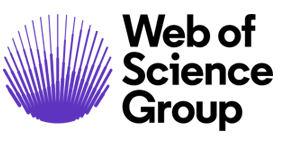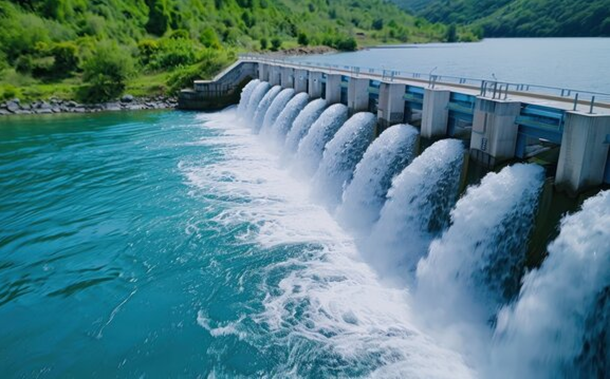Rice Self-Sufficiency and Optimization of Irrigation by Using System Dynamic
Downloads
Doi:10.28991/CEJ-2024-010-02-010
Full Text:PDF
Downloads
[2] Rozaki, Z. (2021). Food security challenges and opportunities in Indonesia post COVID-19. Advances in Food Security and Sustainability, 119–168. doi:10.1016/bs.af2s.2021.07.002.
[3] Purwadi, H., Montarcih Limantara, L., Suhartanto, E., & Rispiningtati. (2020). Optimization of Water Distribution to Support the Balance of Water Usage: A Case Study of the Sempor Irrigation System, Central Java, Indonesia. IOP Conference Series: Earth and Environmental Science, 437, 012030. doi:10.1088/1755-1315/437/1/012030.
[4] Wang, F., Chen, Y., Li, Z., Fang, G., Li, Y., & Xia, Z. (2019). Assessment of the irrigation water requirement and water supply risk in the Tarim River Basin, Northwest China. Sustainability (Switzerland), 11(18), 4941. doi:10.3390/su11184941.
[5] Ding, Z., Gong, W., Li, S., & Wu, Z. (2018). System dynamics versus agent-based modeling: A review of complexity simulation in construction waste management. Sustainability (Switzerland), 10(7), 2484. doi:10.3390/su10072484.
[6] Dolgui, A., Ivanov, D., & Rozhkov, M. (2020). Does the ripple effect influence the bullwhip effect? An integrated analysis of structural and operational dynamics in the supply chain. International Journal of Production Research, 58(5), 1285–1301. doi:10.1080/00207543.2019.1627438.
[7] Olivares-Aguila, J., & El-Maraghy, W. (2021). System dynamics modelling for supply chain disruptions. International Journal of Production Research, 59(6), 1757–1775. doi:10.1080/00207543.2020.1725171.
[8] Hiver, P., Al-Hoorie, A. H., & Larsen-Freeman, D. (2021). Toward a transdisciplinary integration of research purposes and methods for complex dynamic systems theory: beyond the quantitative–qualitative divide. International Review of Applied Linguistics in Language Teaching, 60(1), 7–22. doi:10.1515/iral-2021-0022.
[9] Rathore, R., Thakkar, J. J., & Jha, J. K. (2020). Impact of risks in foodgrains transportation system: a system dynamics approach. International Journal of Production Research, 59(6), 1814–1833. doi:10.1080/00207543.2020.1725683.
[10] Hiver, P., Al-Hoorie, A. H., & Evans, R. (2022). Complex Dynamic Systems Theory in Language Learning. Studies in Second Language Acquisition, 44(4), 913–941. doi:10.1017/S0272263121000553.
[11] Radhika & Hatmoko, W. (2017). Study of controlling irrigation land conversion using a system dynamics approach. Land Conversion Anthology: Food (in) Security, 109–122. Andi, Sleman, Indonesia.
[12] Ibrahim, L. A., Abu-Hashim, M., Shaghaleh, H., Elsadek, E., Hamad, A. A. A., & Alhaj Hamoud, Y. (2023). A Comprehensive Review of the Multiple Uses of Water in Aquaculture-Integrated Agriculture Based on International and National Experiences. Water (Switzerland), 15(2), 367. doi:10.3390/w15020367.
[13] Asmelita, Limantara, L. M., Bisri, M., Soetopo, W., & Farni, I. (2022). Allocation of Existing Water Irrigation in Panti Rao. Journal of Southwest Jiaotong University, 57(3), 355–362. doi:10.35741/issn.0258-2724.57.3.29.
[14] Asmelita, Limantara, L. M., Bisri, M., Soetopo, W., & Farni, I. (2022). Dynamics System Model for the Optimization of Irrigation Water Allocation. Journal of Hunan University Natural Sciences, 49(12), 45–55. doi:10.55463/issn.1674-2974.49.12.5.
[15] Pueppke, S. G., Nurtazin, S., & Ou, W. (2020). Water and land as shared resources for agriculture and aquaculture: Insights from asia. Water (Switzerland), 12(10), 2787. doi:10.3390/w12102787.
[16] Béné, C., Arthur, R., Norbury, H., Allison, E. H., Beveridge, M., Bush, S., Campling, L., Leschen, W., Little, D., Squires, D., Thilsted, S. H., Troell, M., & Williams, M. (2016). Contribution of Fisheries and Aquaculture to Food Security and Poverty Reduction: Assessing the Current Evidence. World Development, 79, 177–196. doi:10.1016/j.worlddev.2015.11.007.
[17] Cameira, M. do R., & Pereira, L. S. (2019). Innovation issues in water, agriculture and food. Water (Switzerland), 11(6), 1230. doi:10.3390/w11061230.
[18] Blanchard, J. L., Watson, R. A., Fulton, E. A., Cottrell, R. S., Nash, K. L., Bryndum-Buchholz, A., Büchner, M., Carozza, D. A., Cheung, W. W. L., Elliott, J., Davidson, L. N. K., Dulvy, N. K., Dunne, J. P., Eddy, T. D., Galbraith, E., Lotze, H. K., Maury, O., Müller, C., Tittensor, D. P., & Jennings, S. (2017). Linked sustainability challenges and trade-offs among fisheries, aquaculture and agriculture. Nature Ecology and Evolution, 1(9), 1240–1249. doi:10.1038/s41559-017-0258-8.
[19] Rahman, M. L., Shahjahan, M., & Ahmed, N. (2021). Tilapia farming in Bangladesh: Adaptation to climate change. Sustainability (Switzerland), 13(14), 1–20. doi:10.3390/su13147657.
[20] BPS-Statistics Indonesia. (2019). Value of Production and Cost of Production per Planting Season per Hectare of Wetland Paddy, Dryland Paddy, Maize, and Soybean, 2017. Available online: https://www.bps.go.id/id/statistics-table/1/MjA1NSMx/nilai-produksi-dan-biaya-produksi-per-musim-tanam-per-hektar-budidaya-tanaman-padi-sawah--padi-ladang--jagung--dan-kedelai--2017.html (accessed on February 2024).
[21] Statistics Indonesia. (2022). Number of Population by Type of Sex and Regency/City (People), 2020-2022. Badan Pusat Statistik Provinsi Sumatera Barat, Indonesia. Available online: https://sumut.bps.go.id/indicator/12/65/1/jumlah-penduduk-menurut-jenis-kelamin-dan-kabupaten-kota.html (accessed on February 2024).
[22] Statistics Indonesia. (2024). Harvested Area, Production, and Productivity of Paddy by Regency/Municipality Result of Area Sampling Frame (ASF) 2021-2023. Badan Pusat Statistik Provinsi Sumatera Barat, Statistics of Sumatera Barat Province, Indonesia. Available online: https://sumbar.bps.go.id/indicator/53/276/1/luas-panen-padi-menurut-kabupaten-kota-hasil-ksa.html (accessed on February 2024).
[23] Statistics Indonesia. (2023). Rice Production by Regency/Municipality Result of Area Sampling Frame (ASF) (Tons), 2021-2023. Badan Pusat Statistik Provinsi Sumatera Barat, Statistics of Sumatera Barat Province, Indonesia. Available online: https://sumbar.bps.go.id/indicator/53/278/1/produksi-beras-menurut-kabupaten-kota-hasil-ksa.html (accessed on June 2023).
[24] Mojjada, S. K., Divu, D. N., Sudhakaran, P. O., Sundaram, S. L. P., Menon, M., Mojjada, R. K., ... & Gopalakrishnan, A. (2024). An integrated techno-economic decision-support fiscal forecast model for sea cage mariculture enterprises for Asian sea bass production in Indian territorial waters. Aquaculture, 580, 740351. doi:10.1016/j.aquaculture.2023.740351.
[25] Rakib, M. R. J., Miah, S., Hossain, M. B., Kumar, R., Jolly, Y. N., Akter, S., ... & Idris, A. M. (2024). Delineation of trace metal level in fish feed and farmed fish, Tilapia (Oreochromis mossumbicus) and their consequences on human health. Regional Studies in Marine Science, 71, 103403. doi:10.1016/j.rsma.2024.103403.
[26] Salie, K. (2014). Aquaculture practices in irrigation reservoirs of the Western Cape Province of South Africa in relation to multiple resource use and socio-ecological interaction. Ph.D. Thesis, Stellenbosch University, Stellenbosch, South Africa.
[27] Soetjipto, W., Andriansyah, R., Qurrata, R. A., Setiadi, T., Susanto, H., Solah, A., Hasan, U., Khaerawati, U., Aryshandy, C., Moriansyah, L., Purnama, N. D., Wahyuni, S., Horida, E., & Kurnia, I. (2019). Value Business and Investment Opportunities. Directorate of Investment Business, Directorate General of Strengthening the Competitiveness of Marine and Fishery Products, Ministry of Maritime Affairs and Fisheries, Central Jakarta, Indonesia.
- Authors retain all copyrights. It is noticeable that authors will not be forced to sign any copyright transfer agreements.
- This work (including HTML and PDF Files) is licensed under a Creative Commons Attribution 4.0 International License.![]()















